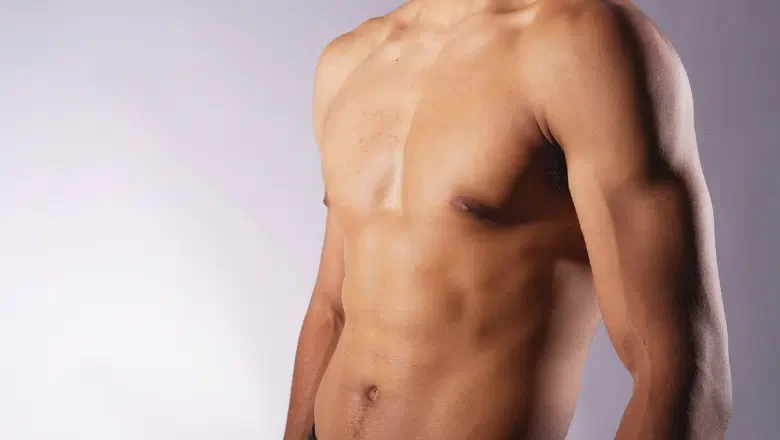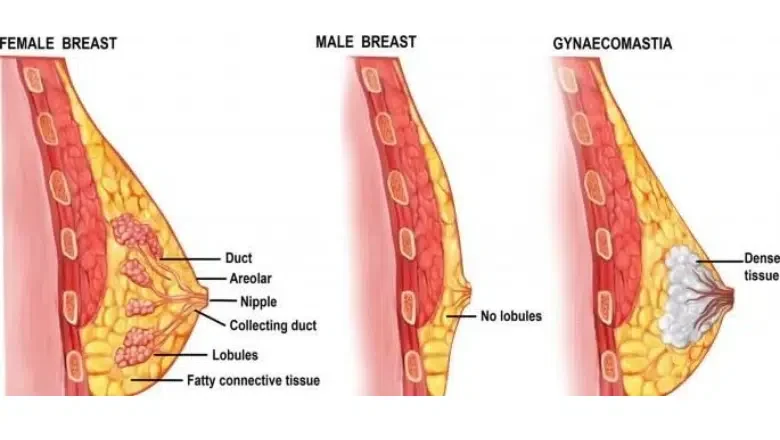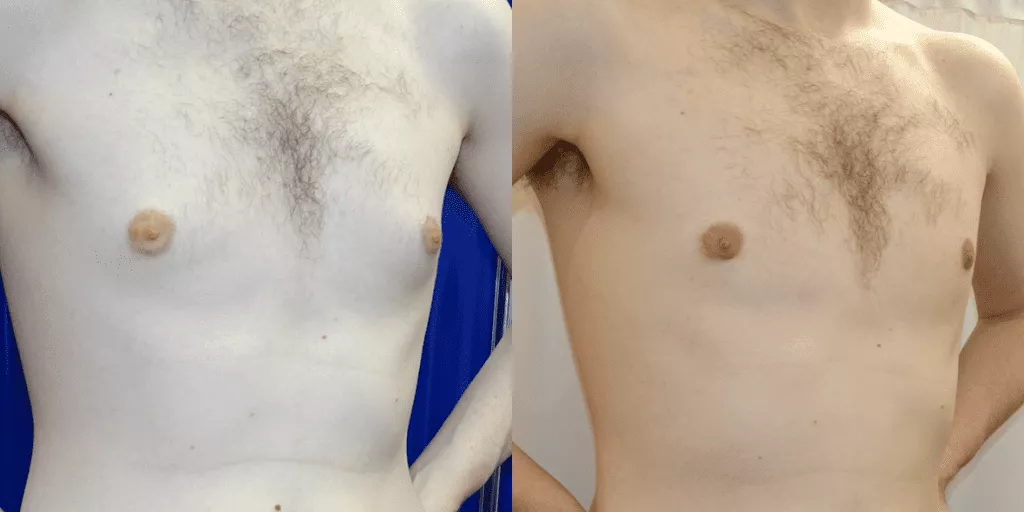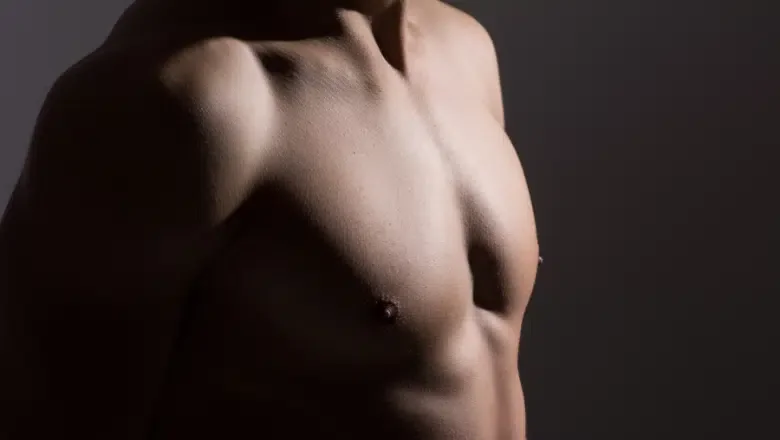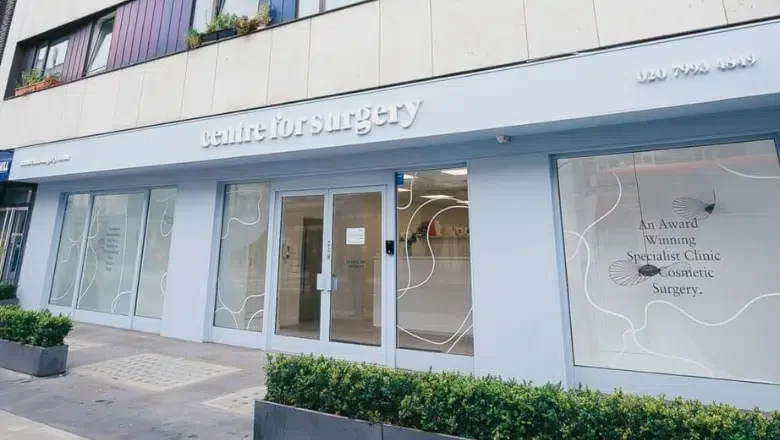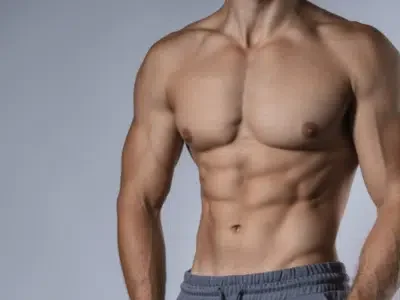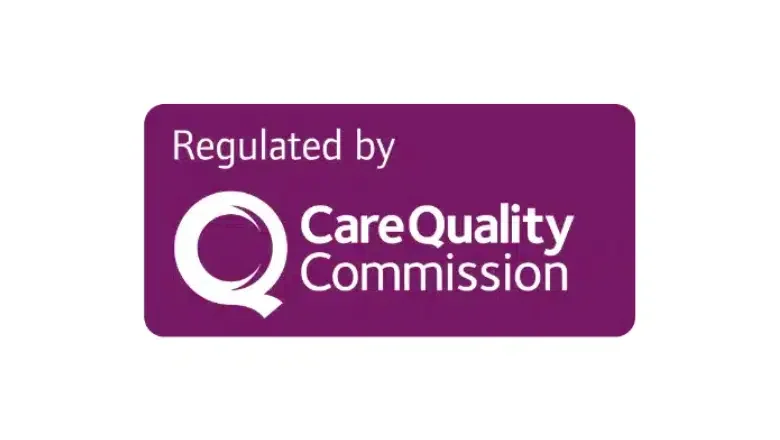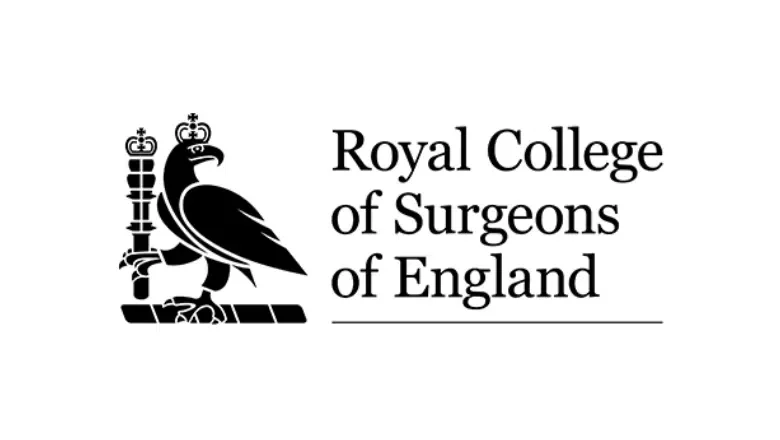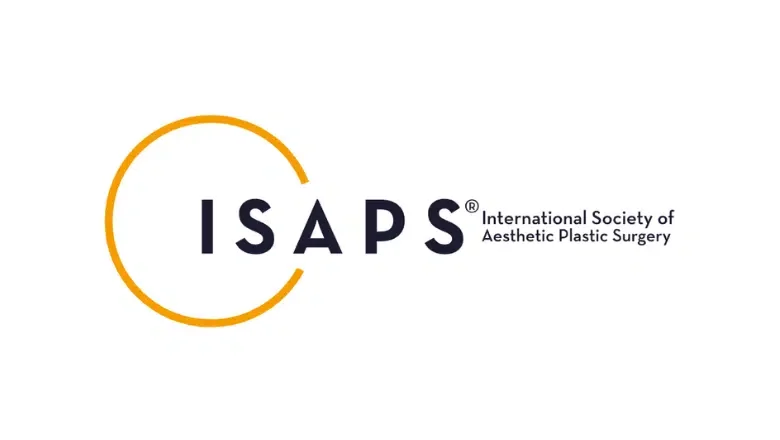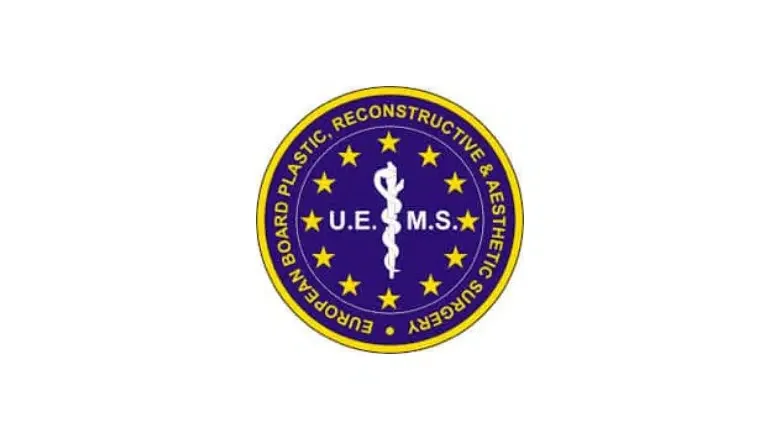Can Marijuana Cause Man Boobs?
Cannabis remains one of the most debated substances in modern times. While touted by some for its medical benefits, concerns persist about its effects on hormonal and reproductive health. Among these concerns, the question arises: can regular cannabis use cause gynecomastia, the enlargement of male breast tissue? At Centre for Surgery, an advanced private clinic in the UK, we support individuals navigating these delicate issues. As specialists in plastic and reconstructive surgery, we offer gyno surgery for those troubled by gynecomastia and are dedicated to delivering professional, informed care.
In this blog post, we dive deep into the emerging evidence, look into underlying mechanisms, explore hormonal pathways and lifestyle factors, weigh alternative diagnoses, and discuss proven treatments. We also explain the surgical methods available at our Baker Street hospital and provide straightforward advice for men seeking help.
What Is Gynecomastia?
Gynecomastia refers to the benign (non-cancerous) swelling of breast gland tissue in males. Unlike pseudogynecomastia, where fat accumulation gives a similar appearance, true gynecomastia involves real breast gland enlargement. It can affect one or both breasts, resulting in anything from a subtle rise beneath the nipple to a pronounced mound.
This condition often stems from a hormone imbalance, especially when oestrogen outweighs testosterone. While natural hormone fluctuations during infancy, puberty, and older age can cause temporary swelling, persistent enlargement in adulthood frequently points to underlying medical problems.
RELATED: Does Gynecomastia Go Away?
Does Cannabis Really Cause Gynecomastia?
Studies investigating cannabis and gynecomastia have reached conflicting conclusions. A small study in the 1970s suggested a potential link, but its methodology has been criticised. A 2003 analysis of autopsy data from Korean men found no significant association between cannabis and enlarged breasts. In contrast, anecdotal reports and case studies describe gynecomastia cases coinciding with frequent cannabis use.
One major challenge is isolating cannabis as the culprit. Lifestyle habits often muddy the waters. Many cannabis users also smoke tobacco, consume alcohol, use other drugs, or take medications—all factors known to impact hormone levels or mimic effects of cannabis. As yet, there’s no large-scale clinical trial confirming that cannabis directly causes male breast growth.
RELATED: What Causes Gynecomastia?
How Cannabis Could Affect Hormones
The substances in cannabis, particularly THC, can influence hormone production. THC binds to cannabinoid receptors in the brain, including areas that regulate hormone release. Here’s how this interaction could potentially trigger gynecomastia:
Impact on Testosterone
THC may suppress testosterone production by affecting the hypothalamic-pituitary-gonadal axis. Lower levels of testosterone can indirectly shift the balance between testosterone and oestrogen.
Enhanced Oestrogen Activity
With suppressed testosterone, oestrogen may become more dominant. Some researchers suggest THC might also increase the conversion of testosterone to oestrogen via the aromatase enzyme, but evidence is preliminary.
Altered Prolactin Levels
Prolactin plays a part in breast development. Elevated prolactin, sometimes noted in cannabis users, could theoretically promote breast-tissue growth if it remains high over time.
Impact of Trichomes and Plant Compounds
Cannabis contains hundreds of compounds. Many remain unstudied in humans. Some minor cannabinoids or terpenes may affect hormone receptors, though their exact roles in breast tissue development remain speculative.
What Medical Factors Could Mimic or Worsen Cannabis Effects?
If you’re concerned about gynecomastia, rely on more than just cannabis habits. Here are other potential contributors:
-
Obesity can increase body fat and mimic male breast enlargement. Fat tissue contains the enzyme aromatase, which converts testosterone into oestrogen.
-
Medications like anti‑ulcer drugs, antidepressants, certain antibiotics and chemotherapy agents can trigger hormonal disruptions.
-
Health conditions such as liver disease, kidney failure, hyperthyroidism or low testosterone levels can all influence breast tissue development.
-
Alcohol and other drugs such as anabolic steroids, heroin and amphetamines contribute to hormonal imbalance and breast growth.
-
Age-related changes include puberty and older age, periods when natural hormone shifts can enlarge breast tissue.
Because these factors often overlap, cannabis might only be part of a bigger hormonal story. No research yet shows that cannabis alone led to gynecomastia in populations adjusting for these influences.
When Should You Worry? Spotting Signs That Demand Attention
Mild breast swelling during adolescence may fade without intervention. But adult men with persistent or bilateral gynecomastia should get medical advice. Be mindful if you notice:
-
Swelling under the nipple that grows over time.
-
Tenderness or pain in breast tissue.
-
Fluid discharge from the nipple.
-
Asymmetry or sudden onset of breast enlargement.
Such symptoms could signal cancerous or inflammatory disorders and must be evaluated by a GP or specialist.
Making A Diagnosis: How Doctors Identify Gynecomastia
To confirm true gynecomastia, doctors use clinical assessment and investigations. These typically involve:
-
A medical and medication history to screen for cannabis use, medicines, or health conditions.
-
Physical examination to distinguish between soft fat and firm breast tissue.
-
Blood tests to check hormones—testosterone, oestrogen, liver and kidney function.
-
Imaging studies such as ultrasound if lumps, discharge or asymmetry are present to rule out tumours.
This thorough approach allows identification of any triggers and guides the most effective treatment pathway.
Treatment Options: From Lifestyle Changes to Surgery
If cannabis is suspected as a factor, reducing use is a logical first step. However, the results of cessation are unpredictable given the lack of solid evidence. Lifestyle adjustments can still help:
-
Reduce alcohol consumption.
-
Eat a balanced diet and exercise to lower body fat.
-
Avoid medications with gynecomastia risk.
-
Maintain regular health check-ups.
If breast tissue persists beyond six months to a year, or it causes discomfort or emotional distress, more direct treatments may be necessary. Your options include medical treatments or surgery.
The Role of Medication in Treating Gynecomastia
Doctors sometimes prescribe medications to rebalance hormones. Off-label treatments often include:
-
Tamoxifen – an oestrogen receptor blocker.
-
Raloxifene – another selective oestrogen receptor modulator.
-
Aromatase inhibitors – to reduce the conversion of testosterone to oestrogen.
-
Testosterone replacement therapy – for men diagnosed with low testosterone.
These drugs have mixed results and potential side effects, such as joint pains, bone thinning, or libido changes. For mild, recent-onset cases, medication may work. For long-standing or severe gynecomastia, surgery remains the most reliable option.
Gynecomastia Surgery
Our plastic surgeons specialise in male breast reduction that removes glandular tissue and sculpts the chest. We perform a detailed assessment including:
-
Your medical and family history.
-
A physical evaluation of breast enlargement and skin condition.
-
Imaging and blood tests if needed.
Types of surgical procedures we offer include:
-
Lipoglandular excision for enlarged breasts is composed of both glandular and fatty tissue, combining liposuction and direct gland removal.
-
Direct gland excision for dense, fibrous tissue under the nipple, which cannot be removed by liposuction alone.
-
Skin reduction techniques for significant sagging due to large, pendulous tissue.
We conduct procedures under general anaesthesia or local anaesthesia with sedation. Usually, we make minimal incisions around the areola or under the breast crease to contain scarring. After surgery, patients wear a compression garment for support, with most returning to normal daily activities within a couple of weeks.
At Centre for Surgery, we pride ourselves on detailed pre‑operative planning and meticulous technique to deliver symmetrical, masculine contouring. Many patients describe improvements in confidence and comfort they never expected.
RELATED: Gynecomastia Surgery FAQs – Q&A about Male Breast Reduction
Recovery and Long-Term Care
Following surgery, you can expect some bruising and swelling for the first few days. Any pain is normally managed with mild painkillers. Compression garments help reduce swelling and aid healing. We recommend avoiding strenuous exercise and upper-body lifting for 4 to 6 weeks.
RELATED: Recovery after Gynecomastia Surgery – Top Tips & Timeline
At three to six months, residual swelling typically resolves, laying bare the final chest shape. Scars near the areola or below the breast fold often fade and become discreet. We monitor progress through follow-up visits and scale down garment use accordingly.
While surgery removes existing tissue, preventing recurrence means addressing all contributing factors. If cannabis or other substances contributed, reduce or eliminate their use. Adopting a healthy diet and weight‑management routine also supports long‑term outcomes.
Before and After: Real-Life Results at Centre for Surgery
Clients often share striking transformations. For example, a 32-year-old man with long-standing bilateral gynecomastia recounted how, after surgery, he finally wore t-shirts without feeling self-conscious. Another patient in his late 40s described a similar story after procedures to remove dense breast tissue and refine his chest contours. These stories reflect the surgically achievable outcomes and the confidence restoration that follows.
RELATED: Gynecomastia Surgery Before & After Photos
Can Gynecomastia Return After Surgery?
Once glandular tissue is removed, regrowth is highly unlikely. Any recurrence usually stems from lifestyle issues like weight gain or resumed use of substances, affecting hormones. If underlying causes aren’t addressed, new breast tissue may appear. Regular follow-up with your GP or specialist is advised.
RELATED: Can Gynecomastia Come Back After Surgery?
FAQs
What is the difference between gynecomastia and pseudogynecomastia
Gynecomastia involves real breast-gland tissue under the nipple, while pseudogynecomastia stems from fat accumulation in the chest. Physical examination and sometimes imaging help distinguish the two conditions.
Does stopping cannabis automatically reverse gynecomastia?
Not necessarily. Some men experience improvement after stopping cannabis, but outcomes vary. True glandular tissue often requires medical treatment or surgery for effective resolution.
Can medication alone treat gynecomastia?
Yes, for recent-onset cases with soft or mild enlargement. Medications like tamoxifen can help. However, fibrous or long-standing breast tissue is less responsive and often needs surgical intervention.
How soon after stopping cannabis should I see a difference?
Hormonal changes may begin within weeks to months. Physical reduction of glandular tissue is unlikely without treatment. A medical evaluation is the best way to determine next steps.
Is surgery safe, and how long does recovery take?
Male breast reduction is safe when done by a qualified plastic surgeon. Most patients can return to light activities within a few days, but full recovery and the ability to resume exercise take 4 to 6 weeks.
Will there be visible scarring on my chest after surgery?
We aim to place incisions around the areola or alongside the natural breast fold for minimal visibility. Over time, scars fade and blend into the skin. No patient is left with unsightly marks.
Can gynecomastia return after surgery?
Recurrence is rare if glandular tissue is fully removed. However, if the underlying cause—such as weight gain or hormonal imbalance—persists, new tissue could develop.
How much does male breast reduction cost at Centre for Surgery?
Costs vary based on the type of procedure and individual needs but generally starts from £3500 for very minor grades of gynecomastia. During consultation, we provide a personalised cost breakdown covering surgeon, facility, anaesthetic, and aftercare.
Why Choose Centre for Surgery for Gynaecomastia Surgery
At Centre for Surgery, we offer expert-led gynaecomastia surgery with a focus on precision, safety, and discretion. Our Baker Street clinic in central London is a purpose-built facility designed exclusively for day case procedures, meaning you can return home the same day after your treatment. With a team of fully accredited plastic surgeons who specialise in male breast reduction surgery, including advanced techniques such as liposuction, gland excision, and skin tightening, you can be confident you’re receiving leading care tailored to your individual needs.
Our surgeons use the latest technology, including ultrasonic-assisted liposuction and plasma devices, to ensure minimal scarring and a natural, masculine chest contour. Whether your gynaecomastia is caused by hormonal changes, medications, or lifestyle factors, we provide a personalised approach with full discretion throughout the process.
Here’s what some of our patients have said about their experience:
“I finally feel confident taking my shirt off. From the first consultation to the surgery itself, the team at Centre for Surgery were incredible. I can’t thank them enough.” – Ryan M.
“The care I received was first-class. Dr Shiatis really understood my concerns and the results have far exceeded my expectations.” – James B.
“I was nervous about having the surgery, but the team made me feel at ease straight away. It was a smooth, professional experience with great aftercare.” – Daniel L.
To learn more about us and our ethos of patient-centred care, visit our About Us page. You can also meet our surgical team and explore our range of finance options to make treatment more accessible.
For more insights into male chest reduction and cosmetic surgery, explore our Plastic Surgery Blog, and if you have questions about our facilities or what to expect, our Clinic FAQs offer helpful guidance.
To book a consultation at our Baker Street clinic, please call us on 0207 993 4849 or email contact@centreforsurgery.com. Your journey to a more confident you starts here.
